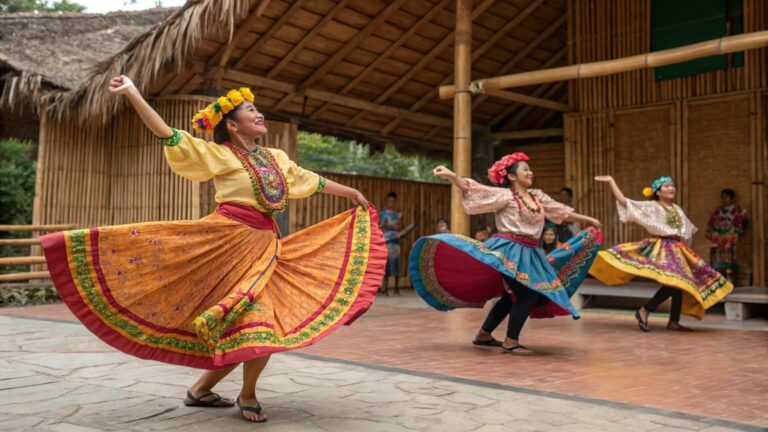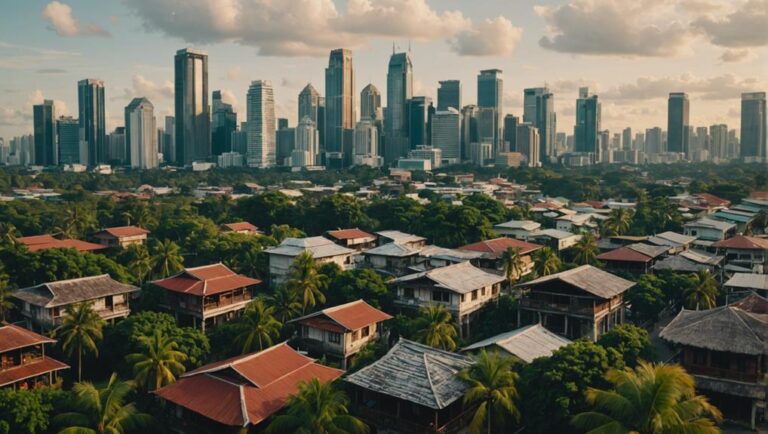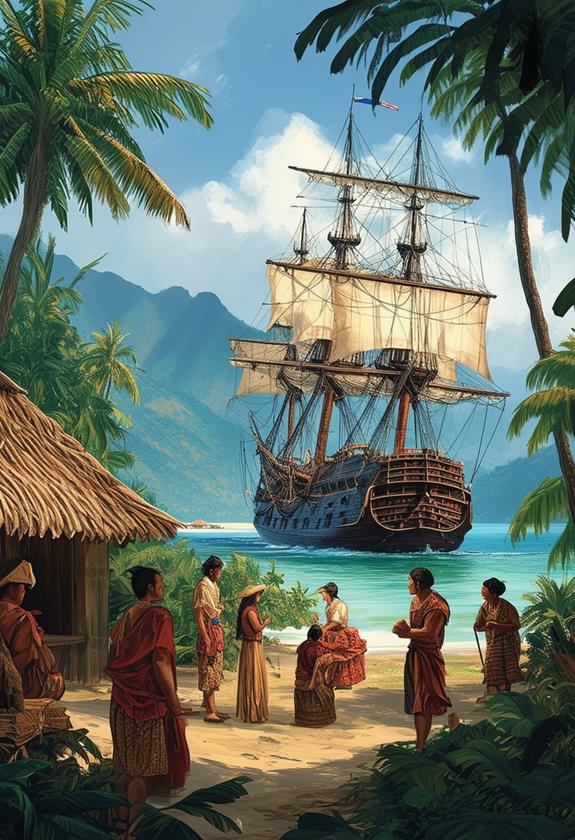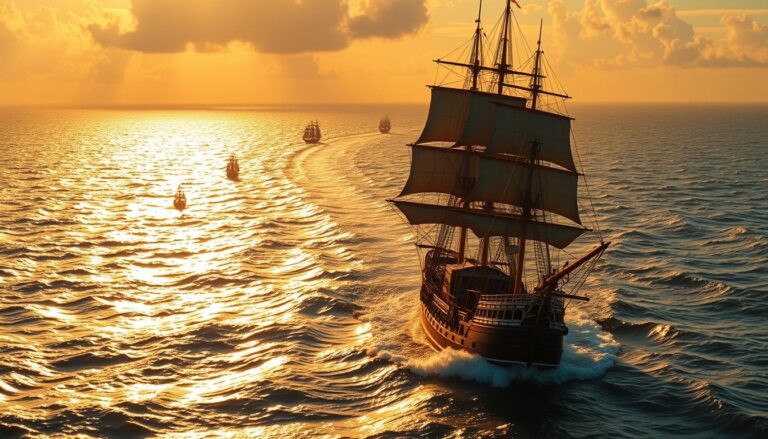The Philippine-American War: A Historic Conflict
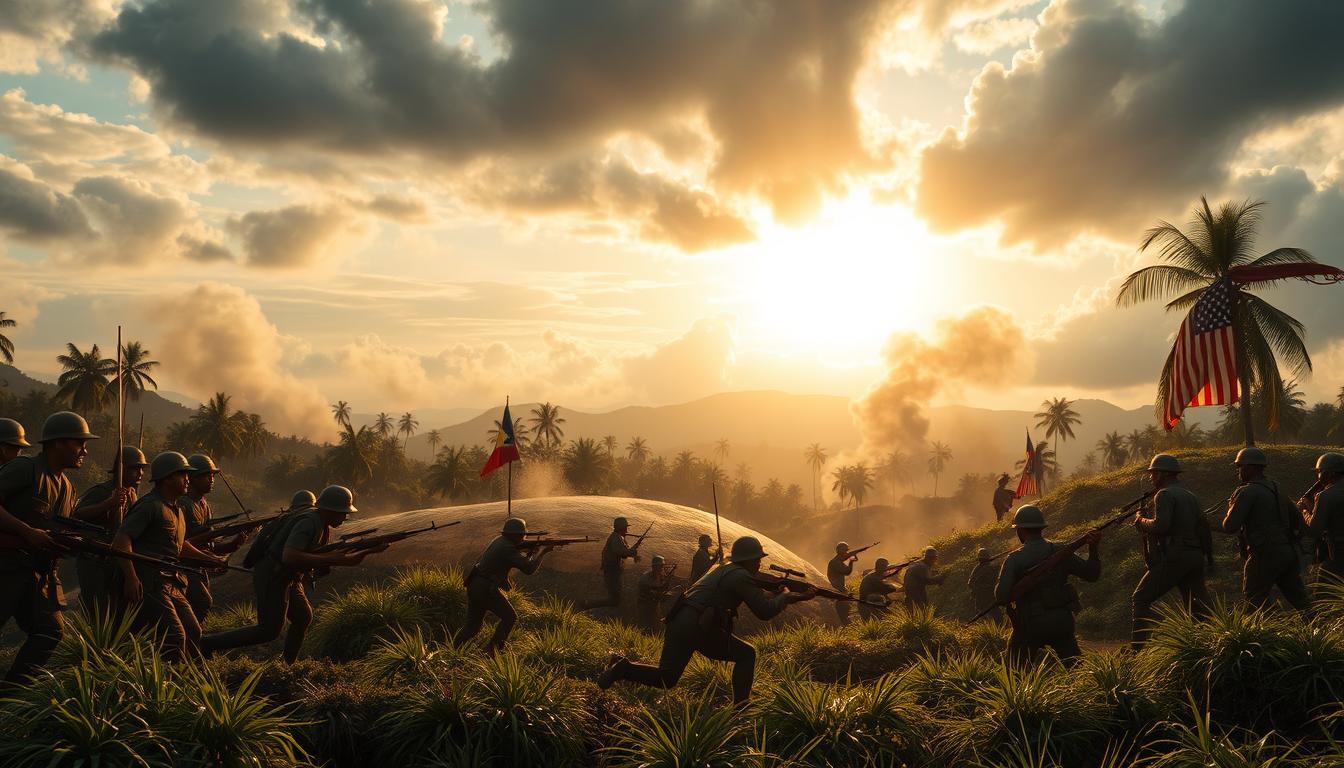
Did you know that over 200,000 Filipino civilians lost their lives during the Philippine-American War? This war lasted from 1899 to 1902. It was not just a fight between armies. It was a clash of ideas, with Filipino nationalists fighting for freedom against U.S. imperialism.
Emilio Aguinaldo became a symbol of resistance. He fought for a nation free from foreign rule.
The Philippine-American War is a key part of U.S. history. It shows the challenges of foreign relations and the cost of expansion. The war began after the Treaty of Paris in 1898, which gave the Philippines to the U.S. from Spain. It exposed the fragility of national identity and the human cost of colonial ambitions.
In this article, we will look at the war’s causes, key events, and its lasting impact on the Philippines and its people.
Key Takeaways
- The Philippine-American War lasted from 1899 to 1902.
- Emilio Aguinaldo was a leading figure in the fight for Filipino independence.
- Over 200,000 Filipino civilians died as a result of violence and disease during the war.
- The conflict resulted in the deaths of more than 4,200 American soldiers.
- The war was characterized by two phases: conventional warfare followed by guerrilla tactics.
- The consequences of the war shaped U.S. colonial policy in the Philippines.
Introduction to the Philippine-American War
The Philippine-American War is a key part of American and Philippine history. It started after the Treaty of Paris in 1898. This treaty made Spain give the Philippines to the United States for $20 million.
The war lasted from February 4, 1899, to July 4, 1902. It was about three years long and very intense. Many lives were lost during this time.
Over 4,200 U.S. soldiers died, and around 20,000 Filipino fighters lost their lives. Civilians suffered greatly too. It’s estimated that 200,000 Filipino civilians died from violence, hunger, and sickness.
The war was brutal. Many villages were destroyed, and both sides committed acts of torture. This shows how harsh the conflict was.
The war had two main phases. The first lasted from February to November 1899. Then, it turned into guerrilla warfare until Emilio Aguinaldo was caught in 1901. By spring 1902, most Filipino resistance had ended.
This introduction highlights the war’s impact. It changed how the U.S. and Philippines relate to each other. It also shaped Southeast Asia’s politics.
Background of the Conflict
The Philippine-American War started against a complex background. For over three centuries, the Philippines was under Spanish rule. This long time of control made many Filipinos want freedom.
Leaders like José Rizal inspired people to fight for independence. Emilio Aguinaldo became a key military leader during this time.
After the Spanish-American War, the U.S. took over the Philippines. Many Filipinos saw this as just another form of control. They felt betrayed and wanted to resist.
They saw U.S. rule as a new form of oppression. This led to a fight against their new rulers.
Between February 1899 and July 1902, about 250,000 lives were lost. Most of these were Filipino civilians, dying from disease and hunger. Over 4,000 American soldiers also died, showing the war’s intense violence.
This sets the stage for understanding the Philippine Revolution. It shows the clash between Filipino dreams of freedom and American ambitions. This conflict is one of history’s most significant.
| Statistics | Details |
|---|---|
| Duration of War | February 1899 to July 1902 |
| Total Lives Lost | Approximately 250,000 |
| American Casualties | Over 4,000 soldiers |
| Filipino Casualties | Around 20,000 fighters and 200,000 civilians |
| Troops Involved | Over 70,000 individuals |
Causes of the Philippine-American War
The Philippine-American War started from a mix of reasons. These reasons were tied to U.S. expansion and Filipino desire for freedom. After the Spanish-American War, the U.S. wanted to control the Philippines. They claimed it was for the good of the Filipinos, but it was really about gaining territory and power.
Filipino leaders, who had fought for freedom from Spain, saw things differently. They wanted to be free and self-governing. But, the U.S. actions led to growing tensions. The clash between U.S. rule and Filipino dreams of freedom sparked resistance.
Important reasons for the war were:
- The idea of Manifest Destiny among Americans, which meant they thought they should control other lands.
- Conservative views in the U.S. that believed Filipinos needed U.S. help to govern well.
- The strong desire for freedom and self-rule among Filipinos, which fueled their fight against foreign rule.
These reasons led to a war that was very bloody and hurtful to both sides. The U.S. push for more territory ended up causing a war that changed the relationship between the Philippines and the U.S. a lot.
Spanish-American War: A Prelude to the Conflict
The Spanish-American War was a key moment in U.S. history. It changed its foreign policy and its territory. The war lasted from late April to December 10, 1898. It involved places like the Philippines, Guam, Puerto Rico, and Cuba.
The USS Maine exploded in Havana Harbor on February 15, 1898. This event raised tensions between the U.S. and Spain. It led to military actions.
After the war, the Treaty of Paris was signed. It gave the Philippines to the U.S. But, it ignored the Filipino people’s wish for independence. Their leaders had been fighting for freedom, feeling betrayed by the U.S.
The Philippine-American War started on February 4, 1899. Filipinos declared independence and fought against the U.S. The early stages of the war were confusing, with the U.S. calling it the “Philippine Insurrection.”
Veterans from both wars faced challenges in their service recognition. Those who fought in the Philippine-American War were often seen as Spanish-American War Veterans. It’s important to know the exact dates and units to honor their sacrifices.

Key Figures: Emilio Aguinaldo and the Revolutionary Leaders
The Philippine-American War saw many key figures shape the fight for Filipino independence. Emilio Aguinaldo led the charge, showing the dedication of leaders to national freedom. He was not alone, as many others worked hard to achieve independence despite many obstacles.
The Role of Emilio Aguinaldo
Emilio Aguinaldo was born on March 22, 1869. He became a key leader in the Philippine Revolution from 1896 to 1898. He led the fight and declared the Philippines a republic on January 23, 1899.
After the Spanish-American War, Aguinaldo made a pact with the Spanish governor general in December 1897. This pact temporarily stopped fighting. But he didn’t give up, continuing to fight against American rule after the Treaty of Paris gave the Philippines to the U.S. on December 10, 1898.
Aguinaldo showed great determination. He changed his tactics from open battles to guerrilla warfare when faced with strong American forces.
Other Significant Leaders
Other leaders joined Aguinaldo in the fight for freedom, facing many challenges. Antonio Luna and Gregorio del Pilar were among them. Luna aimed to build a strong army, while del Pilar showed bravery and youth on the battlefield.
Together, these leaders showed the strength and diversity of the Filipino independence movement. They each played a unique role, overcoming internal conflicts and foreign opposition.
Major Events of the Philippine-American War
The Philippine-American War was a complex chapter in history. It was filled with significant events that shaped its path. The war started on February 4, 1899, with fighting between American and Filipino forces. This followed a tense political situation after the Spanish-American War.
Key battles were crucial in shaping the war’s outcome. The Battle of Manila on February 5, 1899, showed the fierce resistance American troops faced. Later, American forces captured Malolos on March 31, 1899, a key victory.
On June 5, 1899, General Antonio Luna, a key Filipino leader, was assassinated. This loss hurt the Filipino forces’ morale and strategy. American troops also faced tough battles, like the Battle of Tirad Pass on December 2, where 60 Filipino soldiers bravely fought off 500 Americans for hours.
The war saw a shift from traditional to guerrilla warfare. After initial conventional battles, Filipino forces started using guerrilla tactics. This was a response to American military strategies.
The war took a heavy toll on both military and civilians. Over 4,200 American soldiers died, and more than 20,000 Filipino combatants were killed. Sadly, up to 200,000 Filipino civilians died due to violence, famine, and disease.
The war ended on July 4, 1902, when the U.S. declared victory. President Theodore Roosevelt issued amnesty. The war’s events deeply influenced Philippine history and U.S.-Philippine relations.
| Date | Event |
|---|---|
| April 21-25, 1898 | Spanish-American War begins |
| May 1, 1898 | Battle of Manila Bay, American victory |
| February 4, 1899 | Hostilities erupt between U.S. and Filipino forces |
| February 5, 1899 | Battle of Manila |
| March 31, 1899 | American forces capture Malolos |
| June 5, 1899 | Assassination of General Antonio Luna |
| December 2, 1899 | Battle of Tirad Pass |
| July 4, 1902 | Conflict officially declared over |
Battle of Manila: Turning Point
The Battle of Manila happened on February 4-5, 1899. It was a key moment in the Philippine-American War. American soldiers, about 19,000 strong, faced off against 15,000 Filipino militiamen.
The Americans had a big advantage. They had 800 officers and 20,000 enlisted men. They were set up in Manila and along the Zapote line with 8,000 and 11,000 troops, respectively.
This battle was a turning point. The Americans won, but they lost 55 soldiers and 204 were wounded. The Filipinos lost 238 soldiers and 306 were captured.
Despite being outnumbered, the Filipinos fought hard. But the Americans controlled Manila. This victory showed the U.S. military’s new strategies.
The battle also hinted at the guerrilla warfare to come. The Filipinos lost control of Manila but kept fighting in other areas. This victory marked a new chapter in the war.
| Aspect | American Forces | Filipino Forces |
|---|---|---|
| Troop Strength | 19,000 | 15,000 (estimated 20,000 surrounding Manila) |
| Casualties | 55 killed, 204 wounded | 238 killed, 306 captured |
| Deployment | 8,000 in Manila, 11,000 along the Zapote line | Siege instituted by Emilio Aguinaldo |
Phases of the Philippine-American War
The Philippine-American War had different phases, each with its own military tactics. These phases show how the war changed, as the Filipino forces moved from traditional battles to guerrilla warfare.
Conventional Warfare vs. Guerrilla Tactics
The war started in February 1899 and lasted until November. At first, Emilio Aguinaldo’s forces used traditional battles against the U.S. military. The U.S. had about 60,000 troops in the Philippines. Battles like the Battle of Manila showed the U.S. strategy to take control.
By November 1899, the war changed. The Filipino forces began using guerrilla tactics. This phase lasted until March 1901, when Aguinaldo was captured. Over 20,000 Filipino fighters died, showing the impact of guerrilla warfare against the U.S. military’s peak of 65,000 troops.
Guerrilla tactics allowed Filipino fighters to attack U.S. forces in unexpected ways. These attacks led to harsh U.S. responses, like the Samar Massacre. About 200,000 Filipino civilians died from violence, famine, and disease during this time.
| Phase | Duration | Tactics Used | Key Events | Casualties |
|---|---|---|---|---|
| Conventional Warfare | February – November 1899 | Organized military engagements | Battle of Manila, Capture of Malolos | 4,200 American, 20,000 Filipino combatants |
| Guerrilla Warfare | November 1899 – March 1901 | Unconventional tactics, ambushes | Capture of Aguinaldo, Samar Massacre | 200,000 Filipino civilians |
Impact on Filipino Civilians
The Philippine-American War had a huge impact on Filipino civilians. It caused a lot of deaths and suffering. The war changed lives all over the Philippines, affecting everyone.
Casualties and Suffering
At least 200,000 Filipino civilians died during the war. This number is a big part of the 7.6 million people living in the Philippines in 1903. Many civilians fought against the Americans, but only a few supported them.
The war’s effects lasted long after it ended. This shows how devastating and lasting the war’s impact was.
War Crimes on Both Sides
Both American and Filipino forces committed war crimes during the Philippine-American War. There were many reports of violence against civilians. This violence was caused by misunderstandings, racial tensions, and cruel actions.
These actions have left deep scars on the Filipino people. They have sparked important talks about justice and accountability.
| Impact on Civilians | Statistics |
|---|---|
| Population in 1903 | Approximately 7.6 million |
| Civilians Killed | At least 200,000 |
| Revolutionary Soldiers | 80,000 – 100,000 |
| Filipinos Supporting U.S. Forces | About 15,000 |
The U.S. Military Strategy and Tactics
The U.S. military strategy in the Philippine-American War (1899-1902) focused on using conventional power. They relied on better equipment, training, and a strong military structure. This shows how U.S. forces had an edge, but Filipino fighters showed great resilience and resistance.
Advantages of U.S. Forces
American troops had many advantages that changed the war’s course. Key points include:
- Superior Resources: The U.S. had better weapons and logistics than the Filipinos.
- Organized Command Structure: Their military structure helped make quick decisions and move troops fast.
- Infiltration of Local Forces: Scouts like the Macabebe Scouts gave them important info on Filipino movements.
- Infrastructural Development: Improving health and sanitation boosted troop morale and readiness.
Challenges Faced by Filipino Fighters
Filipino forces faced big challenges during the war. These included:
- Limited Resources: They had less ammo, food, and medical supplies, which limited their strength.
- Internal Divisions: Leadership splits and rival groups made it hard to fight together against the Americans.
- Guerrilla Warfare Limitations: Guerrilla tactics were effective at first but were hard to keep up against a better-equipped foe.
- High Casualty Rates: Losing 20,000 fighters and over 200,000 civilians hurt morale and made it hard to find new soldiers.
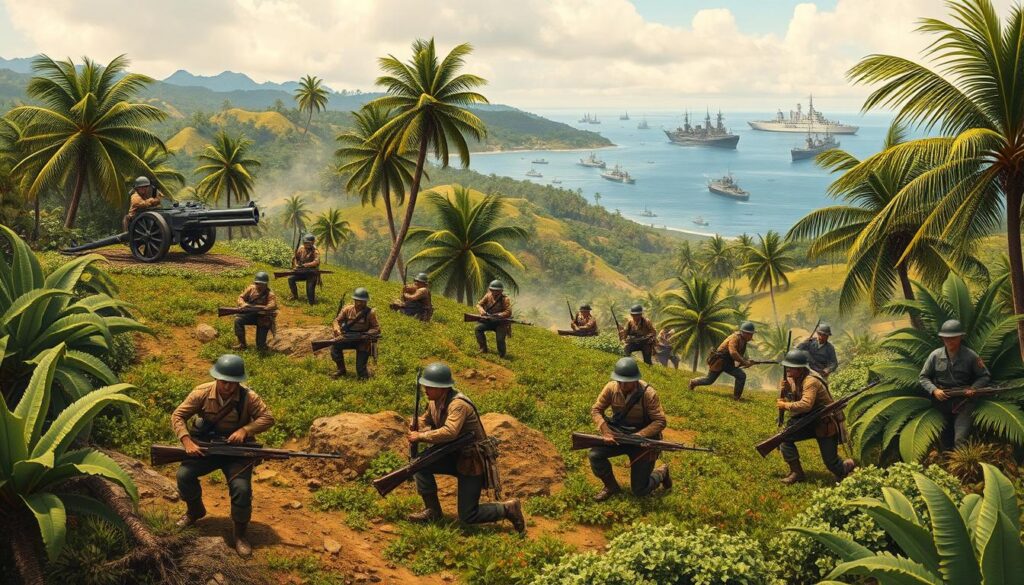
The Role of American Politics
The Philippine-American War had a big impact on American politics. It led to heated debates about colonialism and imperialism. The Anti-Imperialist League was formed, showing growing opposition to expansionist policies.
This group included famous people who opposed the war. They believed it went against American values of self-governance and freedom.
The Anti-Imperialist League
The Anti-Imperialist League started in 1898, right when the war began. People like Mark Twain and Andrew Carnegie spoke out against imperialism. They argued that the U.S. should respect the Filipino people’s right to govern themselves.
They used pamphlets, speeches, and rallies to share their views. They wanted to stop American expansionism.
Public Opinion in the U.S.
Opinions in the U.S. were sharply divided. Some people saw the war as a way to help the Filipinos. Others were against it, worried about human rights and democracy.
Politicians watched these opinions closely. They used them to make decisions about the war. The press also played a big role, shaping how people saw the war.
| Aspect | Pro-War Sentiment | Anti-War Sentiment |
|---|---|---|
| View on Filipino Sovereignty | Belief in U.S. responsibility to govern | Advocated for self-determination |
| Key Figures | Theodore Roosevelt | Mark Twain |
| Media Representation | Heroic portrayal of U.S. soldiers | Critiques of imperialism and war brutality |
| Public Engagement | Rallies supporting military action | Anti-war protests and pamphleteering |
Consequences of the Philippine-American War
The Philippine-American War lasted from 1899 to 1902. It had a big impact on both the Philippines and the United States. The war led to the deaths of hundreds of thousands, possibly millions, of people.
The violence was extreme, with actions seen as war crimes. Entire villages were destroyed, harming the elderly, children, and innocent civilians. This violence showed the harsh side of colonial rule and raised big questions about U.S.-Philippine relations.
The war changed Filipino society deeply. It affected local cultures, politics, and daily life. Scholars debate the effects of U.S. imperialism on the Filipinx community. They say we must understand the genocidal nature of colonization and its lasting impact.
Even today, discussions about justice and authority in the Philippines are shaped by this violence. Voices like Dylan Rodríguez call for research that helps communities affected by colonial violence. We need to uncover the truth about the past to empower and heal today.
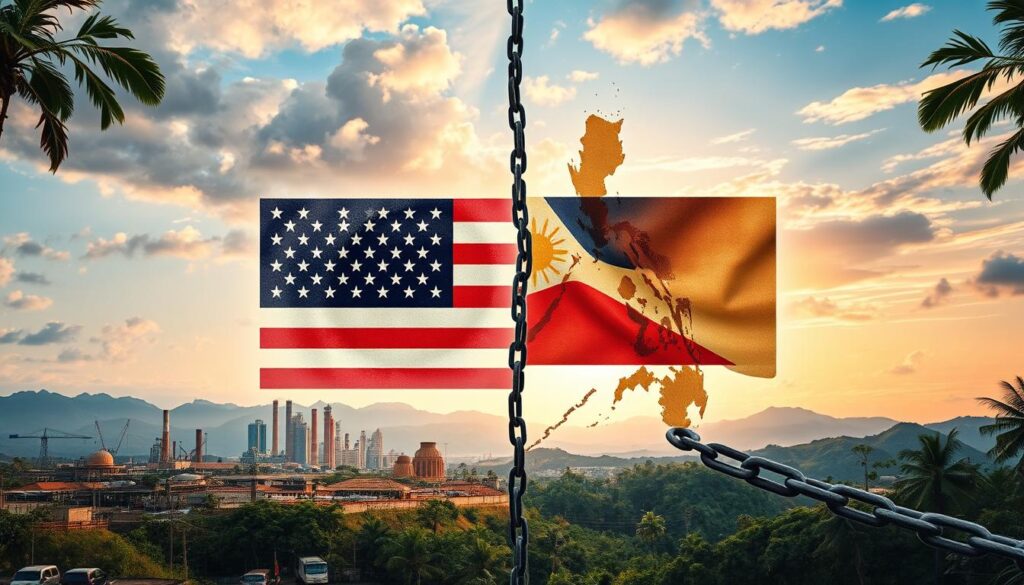
American Colonial Policy: Benevolent Assimilation
The idea of Benevolent Assimilation was key in American colonial policy after getting the Philippines. It started after the Treaty of Paris in December 1898. President William McKinley issued a proclamation on December 21, 1898. This proclamation showed the U.S. wanted to help the Filipino people.
At first, there was conflict. Emilio Aguinaldo declared the Philippine Republic on January 1, 1899. General Elwell Otis adapted McKinley’s proclamation to show U.S. good intentions. He left out words like “sovereignty” to avoid upsetting the locals.
But, tensions grew fast. The Philippine-American War started on February 4, 1899, after U.S. troops clashed with Filipino soldiers. The U.S. wanted to make social reforms to gain the trust of Filipinos. Yet, the conflict went on, despite the U.S. claims of benevolence.
American colonial policy pushed for social reforms, like education and building projects. But, many Filipinos saw these efforts as harmful. This led to resistance and guerrilla warfare that lasted for years. The gap between the U.S. message of Benevolent Assimilation and the reality shows the challenges of colonial policies.
| Key Events | Date | Significance |
|---|---|---|
| Treaty of Paris | December 10, 1898 | Transfer of the Philippines from Spain to the U.S. for $20 million |
| Benevolent Assimilation Proclamation | December 21, 1898 | Outlined U.S. goals and intentions in the Philippines |
| Philippine Republic Declared | January 1, 1899 | First assertion of Filipino independence under Aguinaldo |
| Start of Philippine-American War | February 4, 1899 | Escalation of conflict between U.S. forces and the Philippines |
| U.S. Declaration of the End of Hostilities | July 4, 1902 | The U.S. declared victory despite ongoing guerrilla resistance |
The Aftermath: From Insurrection to Occupation
The Philippine-American War ended on July 4, 1902. The U.S. then occupied the Philippines for a long time. This was to stabilize the area and stop the fight against American rule.
Even after the war, fighting didn’t stop. Groups like the Philippine Army kept resisting American control. This lasted until 1913. The people suffered a lot, with over 6,000 American soldiers and 16,000 Filipinos dying.
Emilio Aguinaldo, the leader of the fight, was caught in March 1901. American officers used a clever plan to capture him. This was a big blow to the resistance.
The U.S. then changed how it governed the Philippines. It wanted a better system to keep control. But many Filipinos saw this as just more of the same old colonial rule. This made them even more upset and proud of their national identity.
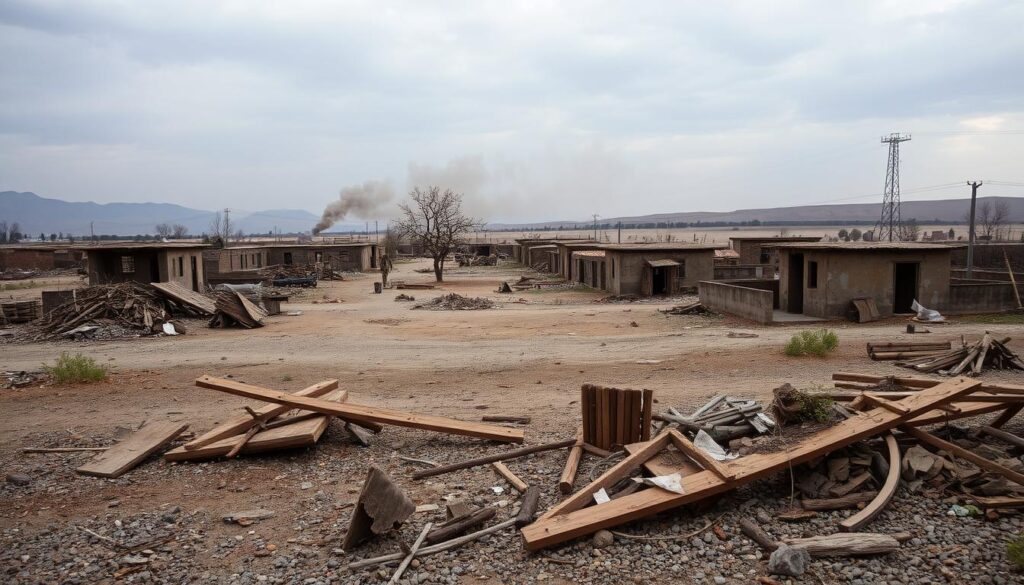
| Event | Date | Significance |
|---|---|---|
| Official end of the war | July 4, 1902 | Shift from open insurrection to American occupation |
| Capture of Emilio Aguinaldo | March 1901 | Pivotal moment in quelling organized resistance |
| Continued resistance | Up to 1913 | Demonstrated ongoing backlash against American rule |
| Casualties of American forces | 1899-1902 | Over 6,000 killed or wounded |
| Filipino casualties | 1899-1902 | Estimated at over 16,000 |
The Path to Philippine Independence
The journey to Philippine independence was marked by key milestones. These were shaped by U.S. policies and laws. On June 12, 1898, the revolutionary government declared independence, a crucial moment.
The Philippine Republic was formally inaugurated in January 1899 in Malolos, Bulacan. This showed the establishment of a sovereign nation. However, the Treaty of Paris on December 10, 1898, kept the Philippines under American control. This was a big disappointment for the Filipino people.
The Jones Law was passed in August 1916, promising eventual independence. This was a step towards more self-governance. The Tydings-McDuffie Law, accepted in May 1934, set a timeline for independence.
The Philippine Commonwealth was inaugurated on November 15, 1935. This prepared the nation for full autonomy.
World War II added to the context of independence. After the war, on July 4, 1946, the U.S. recognized the Philippines as an independent republic. This fulfilled promises made through laws. The long journey showed the Filipino people’s resilience and determination.
Moro Rebellion: Continuation of Resistance
The Moro Rebellion lasted from May 3, 1902, to June 15, 1913. It was a key part of the Muslim Filipinos’ fight against foreign rule, especially by the United States. This conflict caused many deaths and created lasting tensions.
It was not just a single event but a 400-year struggle for the Moro people to be free. They wanted to control their own destiny.
The United States sent about 25,000 soldiers to fight. The cost of keeping control was high. American forces lost 130 soldiers, 270 were wounded, and 500 died from disease.
The Philippine Scouts lost 111 men and 109 were wounded. The Philippine Constabulary suffered 1,706 casualties. These numbers show the harshness of colonial warfare.
The resistance from Muslim Filipinos was strong. The Bud Dajo massacre in 1906 was a turning point. Over 600 Moro men, women, and children were killed, mostly women.
This event showed the brutal response to any dissent against American rule.
The Moro people make up about 5% of the Philippines’ population. The Moro Province, created in 1903, had 395,000 people across 38,888 square miles. By 1906, some areas like Lanao were seen as pacified, showing a controversial victory in military efforts.
In summary, the Moro Rebellion is a key part of the story of resistance. It shows the strength of Muslim Filipinos. Each uprising highlights their complex fight for freedom and the big effects of foreign intervention.
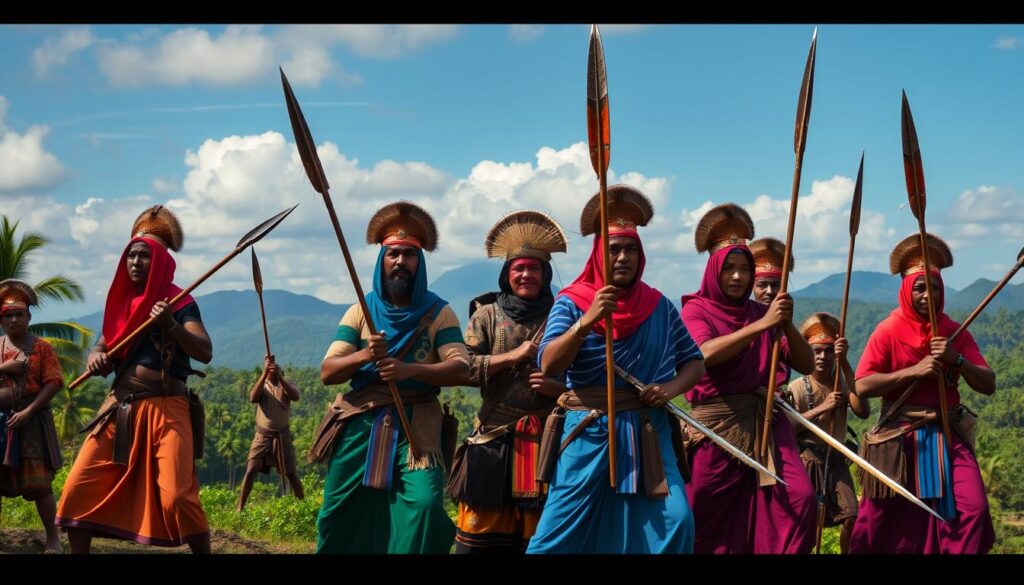
Significant Legislation: Organic Act and Jones Act
The Philippine Organic Act of 1902 and the Jones Act of 1916 were key in the Philippines’ history. The Organic Act set up a government with an American governor-general and a partly elected lower house. This Act was crucial for the Philippines’ governance under U.S. rule.
The Jones Act, passed in 1916, brought more freedom to the Philippines. It replaced the Organic Act and gave the Philippines a fully elected legislature. This change allowed Filipinos to have more say in their government.
The Jones Act also made the Philippine Senate all-Filipino. This was a big step towards self-rule and independence for the Philippines.
To highlight the differences between these laws, here’s a table comparing the Organic and Jones Acts:
| Feature | Philippine Organic Act (1902) | Jones Act (1916) |
|---|---|---|
| Type of Government | Territorial government | All-Filipino legislature |
| Legislature Composition | Appointed upper house, elected lower house | Both houses elected |
| Significant Change | Initial framework for governance | Moved towards autonomy with elected officials |
| Effective Year | 1902 | 1916 |
Conclusion
The Philippine-American War lasted from 1899 to 1902. It had a big impact on both the Philippines and U.S. foreign policy. Millions of lives were lost, with over 20,000 Filipino fighters and 200,000 civilians dying.
The U.S. lost more than 4,200 soldiers. They had to switch from traditional to guerrilla warfare. This made the war very hard and deadly.
This war’s legacy is still felt today. It raised important questions about who gets to decide for themselves. The Philippines got its first elected assembly in 1907 and was promised independence in 1916.
By 1946, the Philippines was fully independent. This journey helped shape the country’s identity. It’s still influencing the Philippines today.
The Philippine-American War is a key part of colonialism’s story. It shows the fight for freedom and identity that many nations face. Thinking about this war helps us understand today’s debates on freedom and power.



